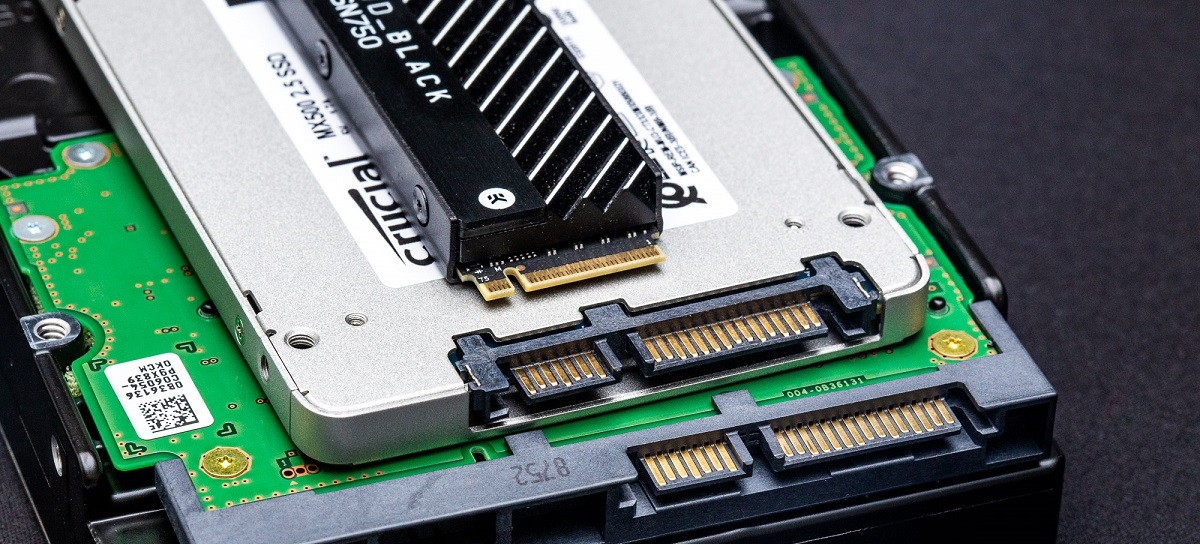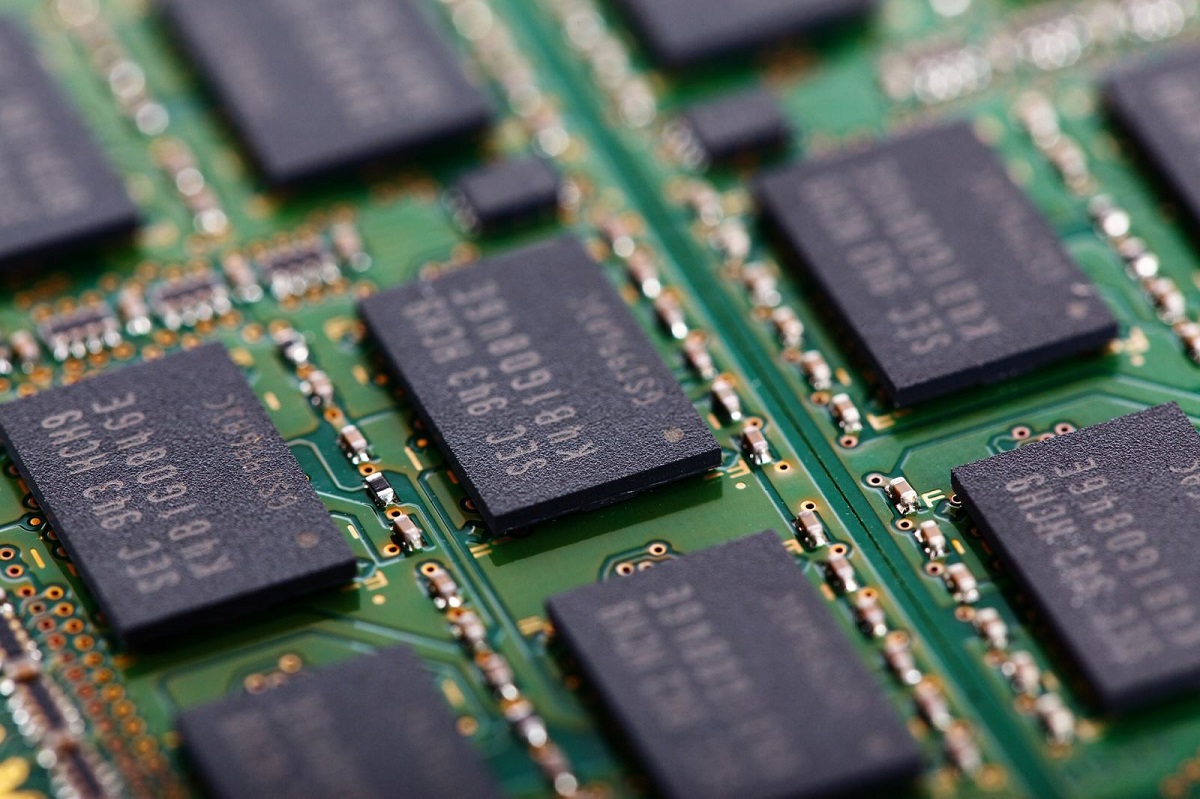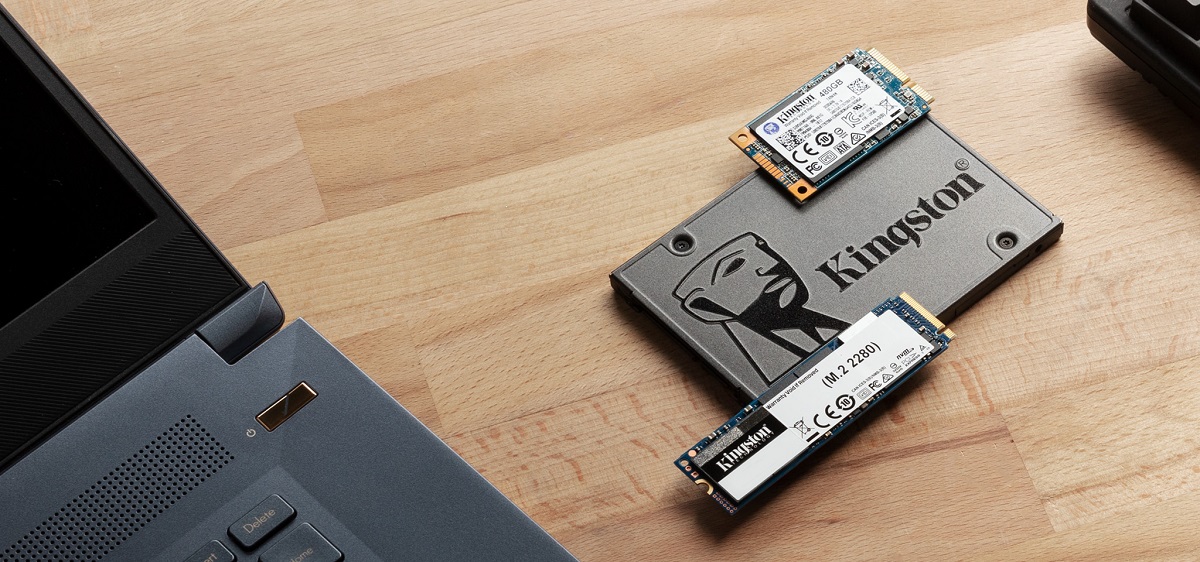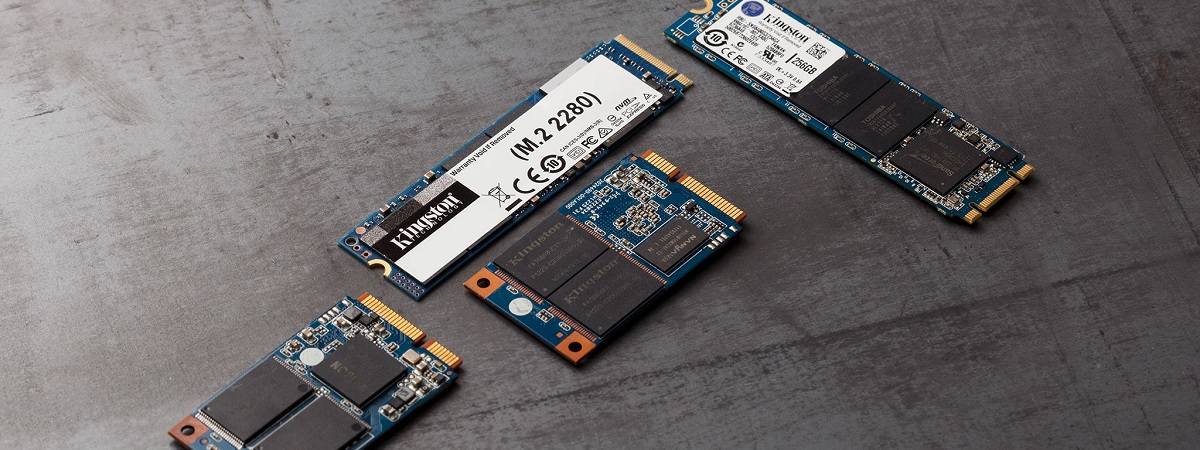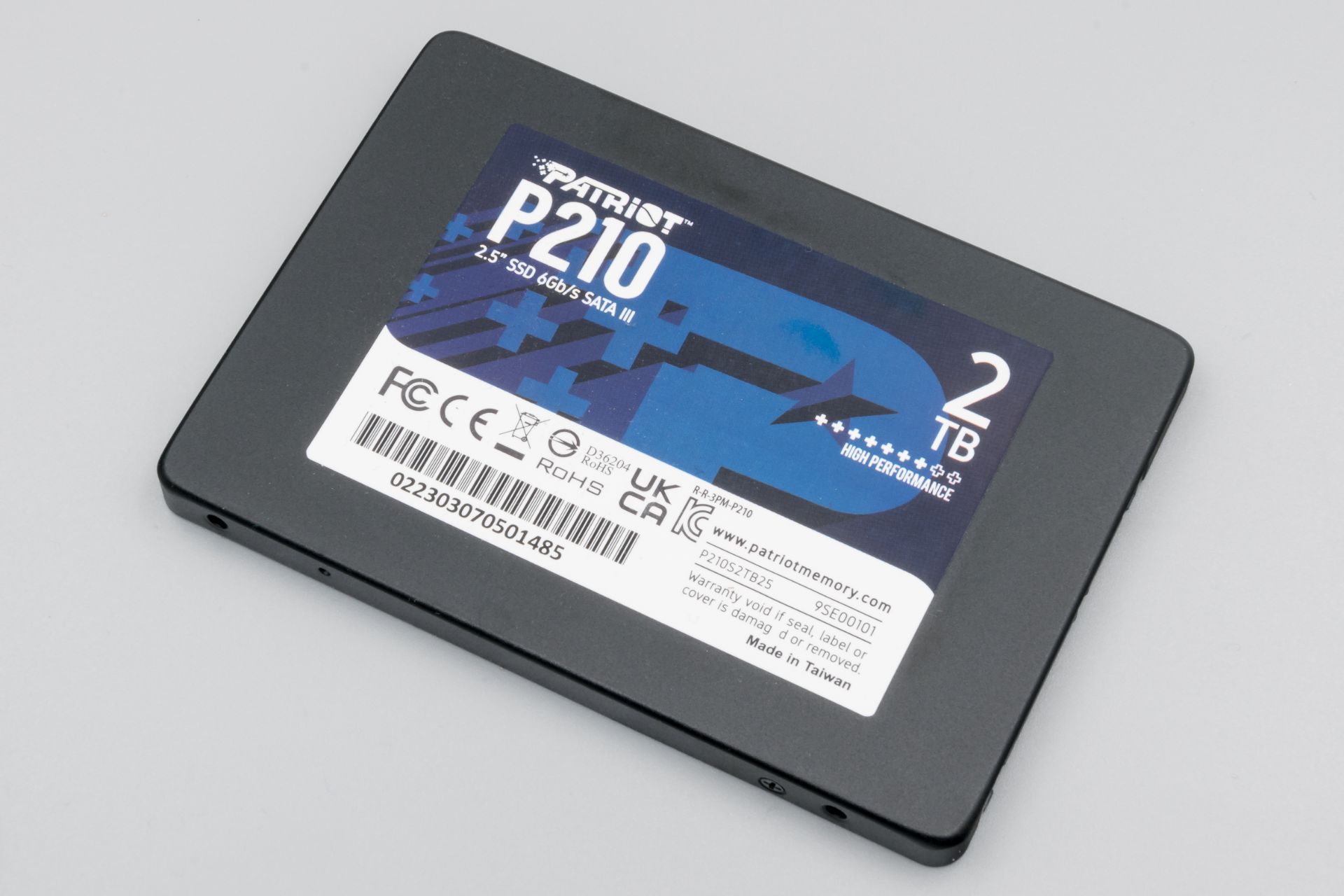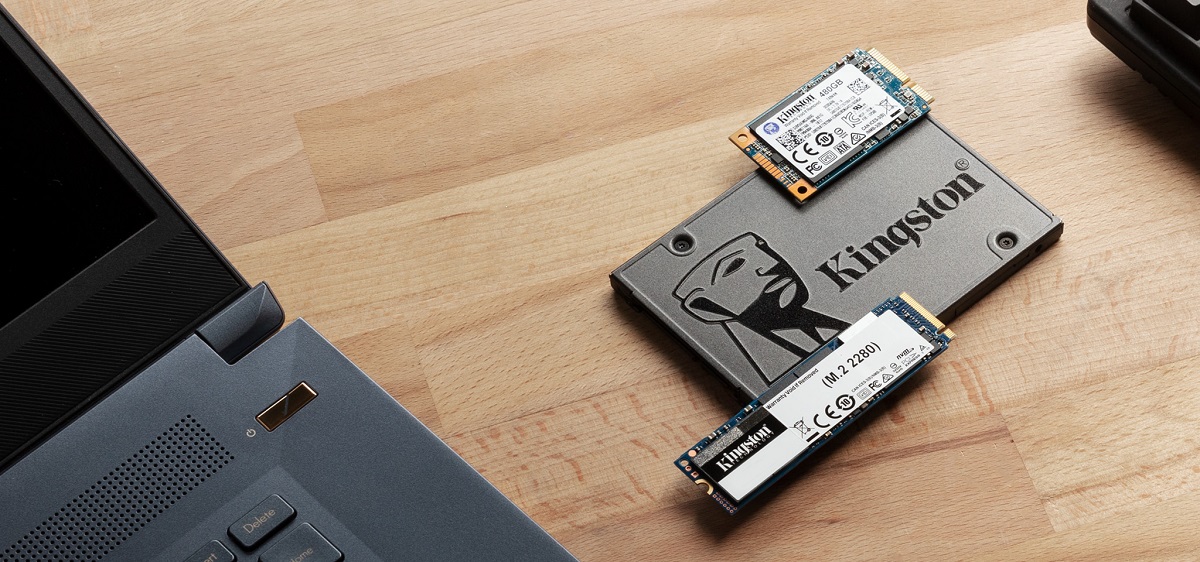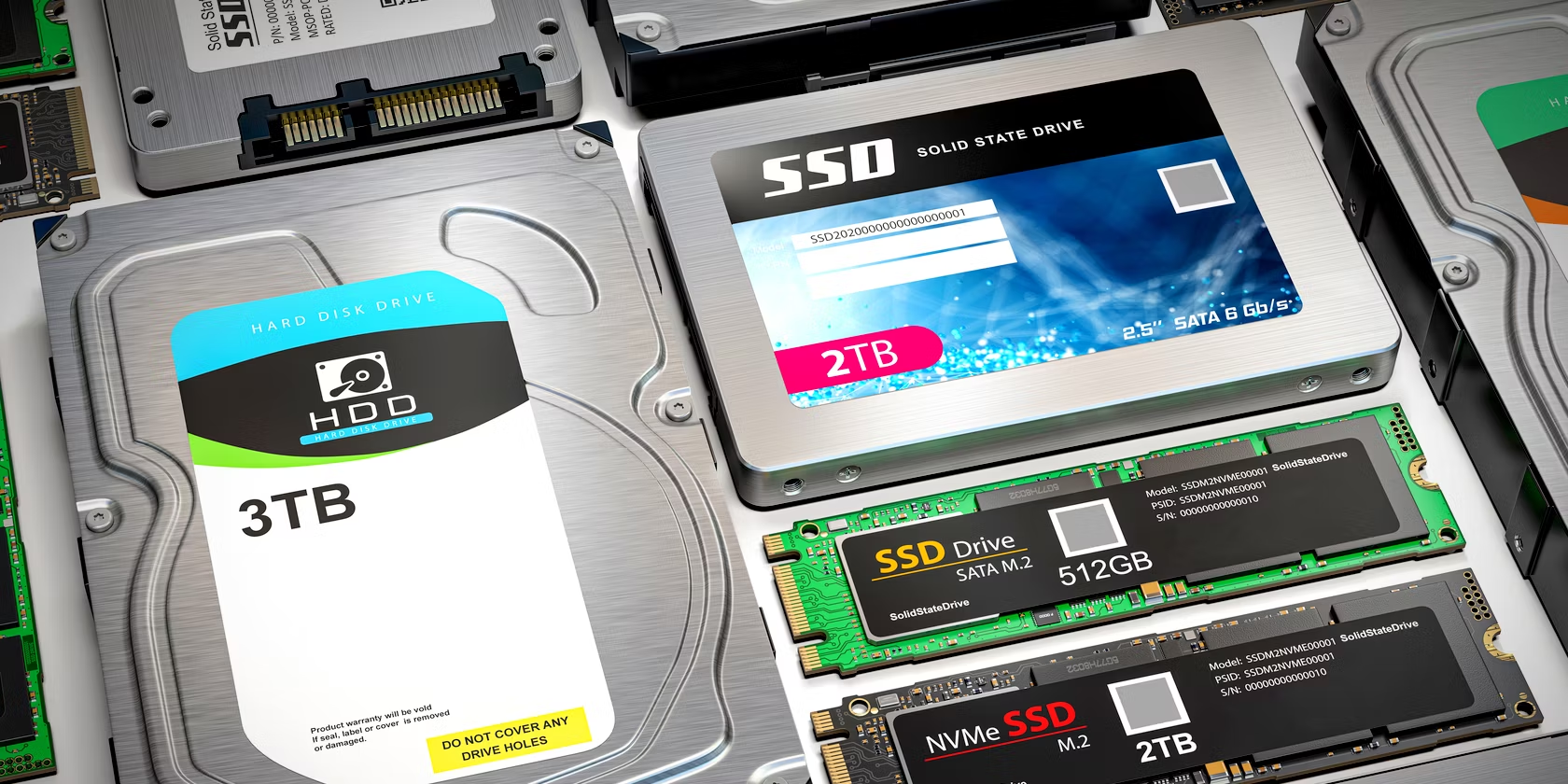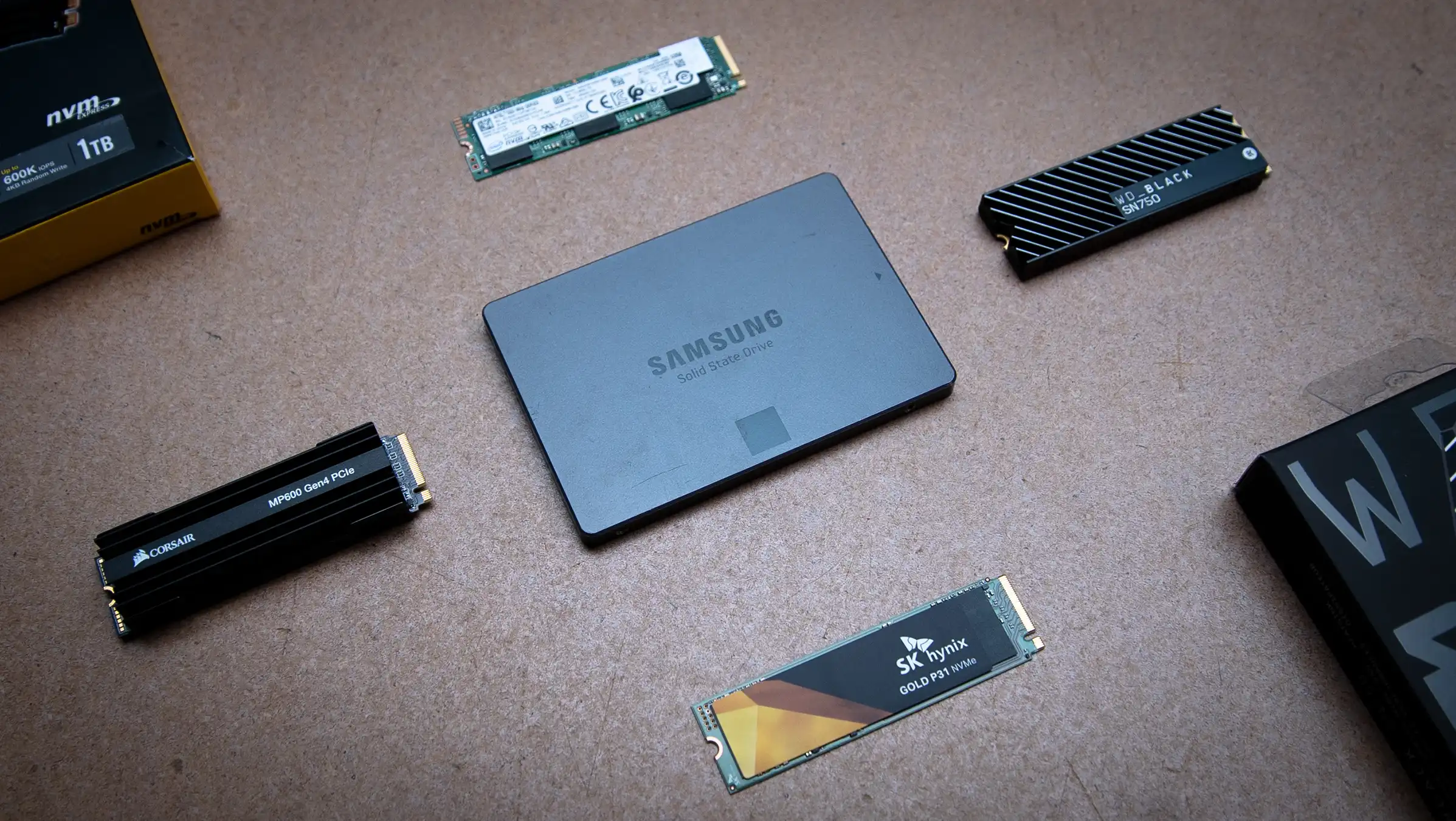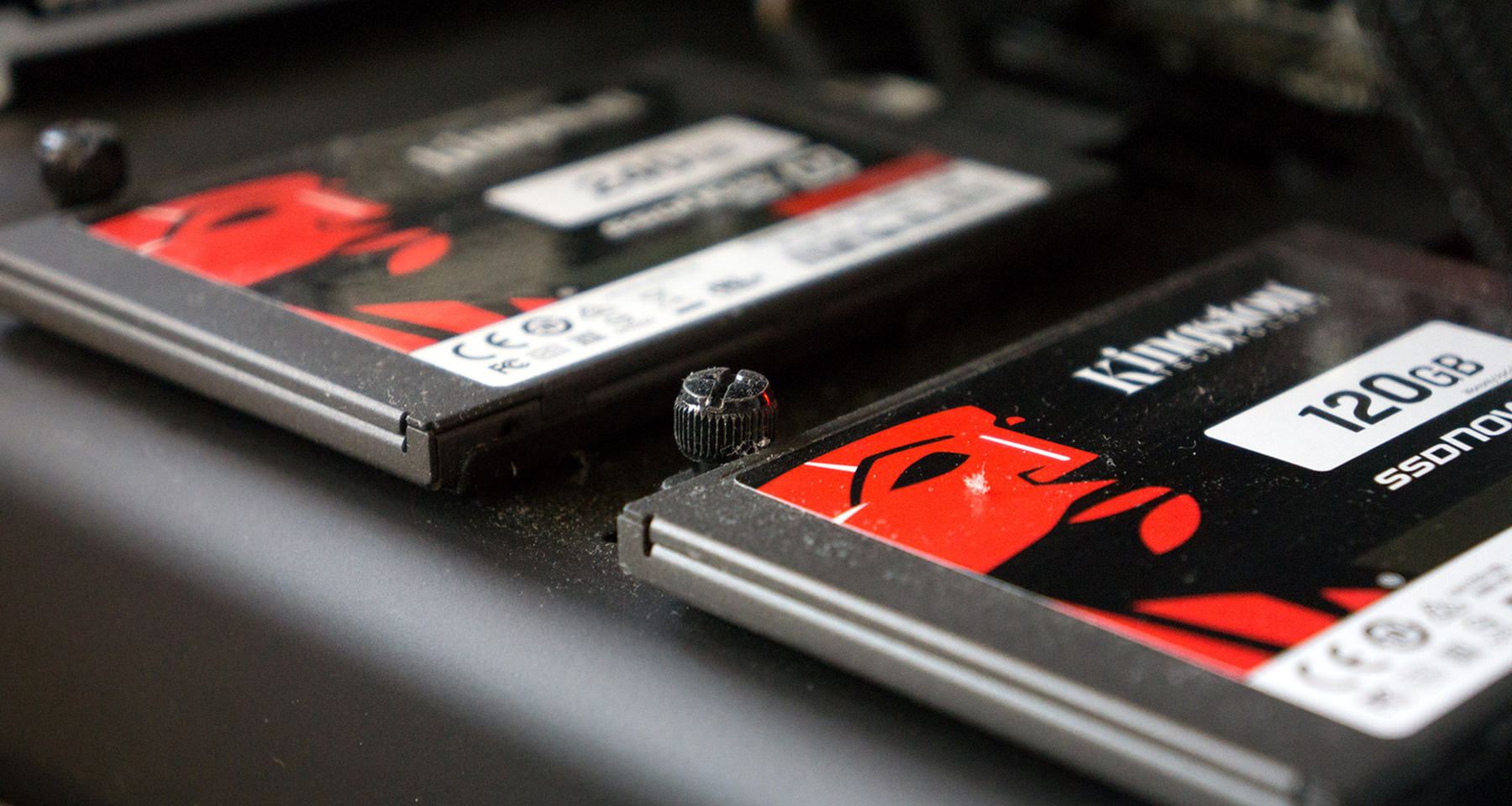Introduction
Welcome to the world of solid-state drives (SSDs), the high-performance storage devices that have revolutionized the way we store and access data. With their lightning-fast speeds and reliability, SSDs have become a popular choice for both personal and professional use. But have you ever wondered how many times an SSD can be rewritten?
In this article, we will delve into the world of SSDs, exploring how they work and uncovering the mysteries surrounding their lifespan. We will discuss the technology behind SSDs, dive into the concept of NAND flash memory, and explore the factors that can affect an SSD’s ability to be rewritten repeatedly.
SSDs are known for their durability and longevity, but just like any other storage device, they have limitations. Understanding the limitations of an SSD can help you make informed decisions when it comes to data storage and management.
So, if you’re curious about how many times an SSD can be rewritten and want to learn more about maximizing its lifespan, this article is for you. Let’s jump in and explore the fascinating world of SSDs!
What is an SSD?
A solid-state drive (SSD) is a type of storage device that stores data using flash memory—an electronic non-volatile storage medium that retains information even when the power is turned off. Unlike traditional hard disk drives (HDDs), which use mechanical components like spinning disks and read/write heads, SSDs utilize semiconductor technology.
SSDs have gained popularity in recent years due to their numerous advantages over HDDs. One of the key benefits of an SSD is its speed. As there are no moving parts involved in the data access process, SSDs can retrieve and write data much faster than HDDs. This makes them ideal for tasks that require quick data transfers, such as booting up operating systems, launching applications, and loading large files.
In addition to their speed, SSDs are also known for their reliability. Since SSDs don’t have any mechanical parts, they are less prone to physical damage caused by drops, bumps, or vibrations. This makes them a great choice for portable devices like laptops and tablets.
Furthermore, SSDs are energy-efficient compared to HDDs. As they don’t rely on spinning disks, SSDs consume less power, resulting in longer battery life for portable devices and reduced electricity bills for desktop computers.
While SSDs offer numerous benefits, they do have some limitations. One of the main limitations is their capacity. SSDs generally have smaller storage capacities compared to HDDs, although this is changing as technology advances and the cost per gigabyte of SSD storage decreases.
Another limitation is the number of times an SSD can be rewritten. NAND flash memory, the technology used in SSDs, has a limited number of program-erase cycles. This means that over time, an SSD may wear out and become less reliable.
In the next section, we will dive into the inner workings of SSDs, exploring how they store and retrieve data using NAND flash memory technology.
How does an SSD work?
To understand how an SSD works, let’s take a closer look at the technology it utilizes: NAND flash memory. NAND flash memory is a type of non-volatile storage that can retain data without the need for power.
SSDs consist of multiple NAND flash memory chips, which are divided into memory cells that store bits of data. Each memory cell can be in one of two states, representing a 0 or a 1. These states are determined by the presence or absence of electrical charge in the cell.
When you save data to an SSD, it is stored by modifying the electrical charges in the memory cells. To retrieve the data, the SSD reads the electrical charges and interprets them as binary information. This process allows for fast, efficient data access.
However, the process of reading and writing data to NAND flash memory presents a challenge. Over time, each memory cell can sustain a limited number of program-erase cycles. This means that as data is written and erased repeatedly, the performance and lifespan of the SSD can be affected.
To mitigate this issue, SSDs employ various techniques to distribute data evenly across the memory cells and optimize performance. One such technique is known as wear leveling. Wear leveling ensures that data is written to different memory cells rather than repeatedly overwriting the same cells. By distributing the write operations, wear leveling helps prevent specific cells from wearing out faster than others, effectively extending the overall lifespan of the SSD.
Another technique employed by SSDs is the use of a trim command. When data is deleted or modified on an SSD, the corresponding memory cells are not immediately cleared. Instead, they are marked as available for erasure. The trim command signals the SSD to proactively erase these marked cells, preparing them for future use. This helps maintain the performance of the SSD by preventing unnecessary delays in data retrieval.
Understanding how an SSD works and how it manages data is crucial to maximizing its lifespan and ensuring optimal performance. In the next section, we will explore the factors that can affect the number of times an SSD can be rewritten.
Understanding NAND Flash Technology
NAND flash technology is the key component that enables the functioning of solid-state drives (SSDs). It is a type of non-volatile memory that retains data even when the power is turned off. Understanding how NAND flash technology works is crucial to grasp the limitations and capabilities of SSDs.
NAND flash memory is organized into a grid of memory cells, which are further divided into pages and blocks. Each memory cell in the grid can store multiple bits of information, typically ranging from one to four bits, represented as different charge levels.
Reading data from NAND flash memory is relatively straightforward. The controller in the SSD applies a reference voltage to each memory cell and measures the resulting charge level. By comparing the charge level to a predefined threshold, the controller determines the stored information in the cell.
Writing data to NAND flash memory, on the other hand, is slightly more complex. To write new data, the controller first erases the entire block in which the data will be stored. Then, it applies the appropriate voltage to each memory cell in the block to program it with the desired information.
The erasing process in NAND flash memory poses a limitation known as the program-erase (P/E) cycles. Each memory cell can only endure a finite number of P/E cycles before it becomes unreliable. This limitation is typically listed in the specifications as the endurance rating of an SSD.
The endurance rating varies depending on the type of NAND flash memory used. Single-level cell (SLC) NAND flash memory provides the highest endurance, capable of enduring tens or even hundreds of thousands of P/E cycles. Multi-level cell (MLC) NAND flash memory, which stores multiple bits per cell, has a lower endurance rating, typically in the range of thousands of cycles.
The latest development in NAND flash technology is triple-level cell (TLC) and quadruple-level cell (QLC) NAND flash memory. These technologies offer higher storage densities at lower costs but have even lower endurance ratings compared to MLC memory.
It’s essential to consider the endurance rating when selecting an SSD for specific use cases. Heavy write-intensive workloads, such as video editing or database management, may benefit from SSDs with higher endurance ratings.
Overall, understanding the underlying NAND flash technology helps in making informed decisions about SSDs. However, other factors also play a crucial role in determining the longevity of an SSD, which we will explore in the next section.
How many times can an SSD be rewritten?
The number of times an SSD can be rewritten, referred to as its endurance or program-erase (P/E) cycles, varies depending on the type and quality of NAND flash memory used in the drive. Different types of NAND flash memory have different endurance ratings, and this information is typically provided by the manufacturer.
Single-level cell (SLC) NAND flash memory, known for its higher performance and durability, can withstand a significantly higher number of program-erase cycles. SLC-based SSDs often have endurance ratings in the range of tens or even hundreds of thousands of cycles. This makes them ideal for applications that require frequent and intensive write operations, such as enterprise-level servers.
Multi-level cell (MLC) NAND flash memory, which stores multiple bits per cell, has a lower endurance rating compared to SLC memory. MLC-based SSDs typically have endurance ratings in the range of thousands of cycles. While this is lower than SLC-based SSDs, it is still suitable for most consumer and mainstream applications.
Triple-level cell (TLC) and quadruple-level cell (QLC) NAND flash memory offer even higher storage densities at lower costs but have lower endurance ratings. TLC-based SSDs usually have endurance ratings in the range of a few thousand cycles, while QLC-based SSDs typically have ratings in the range of a few hundred to a thousand cycles.
It is important to note that these endurance ratings are estimates based on lab testing and real-world usage scenarios. In practice, the actual lifespan of an SSD may vary depending on various factors, such as the workload intensity, temperature, and overall usage patterns.
To put things into perspective, let’s consider an example. Suppose you have an SSD with an endurance rating of 5000 cycles. If you rewrite the entire capacity of the SSD once per day, it would take approximately 13 years before it reaches its specified endurance limit. In most cases, this would exceed the useful lifespan of the SSD for the average user.
Moreover, modern SSDs are equipped with advanced technologies like wear leveling and overprovisioning, which help distribute data evenly across the memory cells and reserve extra space for maintenance tasks. These features enhance the overall lifespan of the SSD and allow for efficient management of the NAND flash memory.
In summary, the number of times an SSD can be rewritten, or its endurance, depends on the type of NAND flash memory used. While endurance ratings vary, SSDs are designed to last for many years under typical usage scenarios. It is essential to consider the endurance rating when selecting an SSD for specific use cases and ensure that it aligns with the anticipated workload.
Factors that affect SSD lifespan
While solid-state drives (SSDs) are known for their durability and longevity, several factors can affect their overall lifespan. Understanding these factors can help you maximize the lifespan of your SSD and ensure optimal performance. Here are some critical factors to consider:
1. Workload: The workload or usage pattern of an SSD plays a crucial role in its lifespan. Intensive and constant write operations can put more strain on the NAND flash memory, potentially reducing its longevity. Workloads like video editing, database management, and virtualization that involve frequent write operations can impact the lifespan of an SSD.
2. Temperature: Temperature can significantly impact the performance and lifespan of an SSD. High temperatures can accelerate wear on the NAND flash memory and other components, potentially leading to data corruption and early failure. It is important to keep the SSD within the recommended temperature range to ensure its longevity.
3. Power Loss or Surges: Abrupt power losses or surges can be detrimental to an SSD’s lifespan. These events can cause data corruption or damage the internal components of the drive. To mitigate this risk, it is advisable to use a reliable power supply and consider investing in an uninterruptible power supply (UPS) for added protection.
4. Prolonged Inactivity: Leaving an SSD unpowered or unused for an extended period can potentially lead to data loss or degradation. It is recommended to periodically power up and use the SSD, even if it’s not in regular use, to maintain its performance and reliability.
5. Quality and Brand: The overall quality and brand reputation of an SSD can significantly impact its lifespan. Investing in a reputable brand known for producing high-quality SSDs can provide assurance of better endurance and overall reliability. Reading reviews and researching the brand’s track record can help in making an informed decision.
6. Overprovisioning: SSDs often come with overprovisioning, which allocates a portion of the drive’s capacity for internal maintenance tasks and wear leveling. Properly managing and utilizing overprovisioning can enhance the SSD’s longevity and ensure consistent performance.
7. Trim Command: The trim command, supported by most modern operating systems and SSDs, helps optimize the performance and longevity of an SSD. By informing the SSD which data is no longer in use, the trim command allows the drive to proactively erase these marked cells, maintaining optimal performance over time.
By considering these factors and implementing appropriate measures, you can maximize the lifespan of your SSD. Regularly monitoring the SSD’s health, keeping it within the recommended temperature range, and practicing safe data handling procedures will help ensure that your SSD remains reliable and performs optimally for years to come.
Overprovisioning: Extending the life of your SSD
Overprovisioning is a technique used in solid-state drives (SSDs) to enhance performance, longevity, and overall reliability. It involves allocating a portion of the drive’s capacity for internal maintenance tasks, wear leveling, and efficient garbage collection. While it reduces the usable storage capacity of the SSD, the benefits it provides are worth considering.
By setting aside a percentage of the drive’s capacity for overprovisioning, SSDs can better manage and distribute data across the NAND flash memory cells. This distributed approach avoids overutilization of specific cells, reducing the risk of premature wear and extending the overall lifespan of the drive.
One of the key advantages of overprovisioning is improved write performance. With additional room to carry out background tasks, such as garbage collection and wear leveling, the SSD can maintain optimal write speeds over time. It also helps in reducing write amplification, a phenomenon where multiple writes are needed to update a single block of data, ensuring efficient use of the NAND flash memory and reducing unnecessary wear.
Overprovisioning also enhances the endurance of the SSD. By reserving a part of the capacity, the drive can distribute write operations across a larger pool of memory cells. This results in more even wear leveling, reducing the strain on individual cells and increasing their overall durability.
Additionally, overprovisioning can be particularly beneficial in managing the performance degradation that can occur as an SSD begins to fill up. By having extra capacity available for background tasks, the SSD can maintain consistent performance levels even when nearing its maximum capacity.
It is important to note that overprovisioning can be implemented at the drive level by manufacturers or through user-initiated configurations in certain SSDs. Some modern SSDs come with a feature called Dynamic Overprovisioning, which allows users to adjust the level of overprovisioning according to their specific needs.
When considering overprovisioning, it is vital to strike a balance between capacity and overprovisioned space. The amount of overprovisioning required depends on factors such as workload intensity, expected lifespan, and the specific requirements of the application. A recommended approach is to allocate around 10-20% of the SSD’s capacity for overprovisioning.
In summary, overprovisioning is an essential technique to optimize the performance, longevity, and reliability of SSDs. By allocating a portion of the drive’s capacity for internal maintenance tasks and wear leveling, overprovisioning ensures efficient data management and extends the overall lifespan of the SSD. While it reduces usable capacity, the benefits of increased performance, durability, and consistency make it a valuable consideration for anyone looking to maximize the potential of their SSD.
Wear leveling: Distributing data evenly
Wear leveling is a critical technique used in solid-state drives (SSDs) to extend their lifespan and ensure the even distribution of data across the NAND flash memory cells. This technique helps to prevent specific memory cells from wearing out faster than others, improving the overall durability and performance of the SSD.
When data is written to an SSD, it is stored in specific memory cells. Over time, as data is constantly updated or deleted, certain cells can experience more write cycles than others. This non-uniform distribution of write operations can lead to individual cells becoming worn out or “worn leveling” imbalance, affecting the overall lifespan of the drive.
Wear leveling addresses this issue by redistributing the writes across all available memory cells. This ensures that each cell is used evenly, spreading out the wear and ensuring that no single cell is subjected to excessive write operations. By doing so, wear leveling helps to maximize the lifespan of the SSD and maintain consistent performance over time.
There are various wear leveling algorithms employed by SSDs to achieve this even distribution of writes. Each algorithm works differently but has the same end goal of minimizing cell wear. Some commonly used wear leveling algorithms include static wear leveling, dynamic wear leveling, and hybrid wear leveling.
Static wear leveling is the simplest form of wear leveling, where data is evenly distributed across the cells during the initial writing phase. However, as data is modified or deleted, static wear leveling does not adapt to changes and may not effectively mitigate wear imbalance in the long run.
Dynamic wear leveling, on the other hand, dynamically tracks the usage of each memory cell and redistributes data accordingly. This algorithm considers factors such as the age and erase count of the cells, ensuring that the wear is evenly distributed across the entire SSD. This dynamic adaptability makes it more effective at lengthening the lifespan of the SSD compared to static wear leveling.
Hybrid wear leveling combines both static and dynamic wear leveling algorithms to optimize performance and durability. It uses static wear leveling during periods of low write activity and dynamic wear leveling when the write intensity increases. This combination allows for efficient wear distribution and provides a balance between performance and longevity.
By employing wear leveling techniques, SSDs can ensure that no individual cells are excessively used, preventing premature wear and extending the overall lifespan of the drive. This improves the SSDs reliability, performance, and durability, making them an excellent choice for various applications, from personal computing to enterprise-level storage systems.
Trim command: Optimizing performance and longevity
The trim command is an essential feature supported by both modern operating systems and solid-state drives (SSDs) that plays a crucial role in optimizing the performance and longevity of SSDs. By informing the SSD which data is no longer in use, the trim command allows the drive to proactively erase these marked cells, ensuring efficient data management over time.
When files are deleted or modified on an SSD, the operating system typically marks the corresponding blocks as available for reuse. However, without the trim command, the SSD is unaware of these changes and still considers the blocks as in use. As a result, when new data needs to be written, the SSD first needs to go through an extra step of erasing the marked cells before writing the new data. This additional step, known as erase-before-write, slows down the write operations and can impact the overall performance of the SSD.
The trim command solves this problem by allowing the operating system to communicate with the SSD. When a file is deleted or modified, the trim command is sent to the SSD, instructing it to proactively erase the marked cells. This “trimming” process prepares the cells for future writes, eliminating the need for an erase-before-write operation when new data is written. As a result, the SSD can efficiently utilize its available memory cells, leading to improved performance and reduced write amplification.
In addition to performance optimization, the trim command also contributes to the longevity of the SSD. By immediately erasing the marked cells, the SSD can maintain the integrity and efficiency of its memory cells. Without the trim command, the SSD would eventually need to perform a time-consuming garbage collection process to consolidate data and reclaim unused blocks. This process puts additional strain on the NAND flash memory and can potentially reduce its lifespan.
It’s important to note that the trim command requires both the operating system and the SSD to support the feature. Most modern operating systems, such as Windows 7 and later versions, macOS, and Linux, include native support for the trim command. SSDs also need to have firmware that supports and correctly implements the trim command to take advantage of its benefits.
To ensure optimal performance and longevity of your SSD, it is essential to enable the trim feature and keep your operating system and SSD firmware up to date. By allowing the SSD to efficiently manage its data and prevent unnecessary write operations, the trim command helps maintain the performance and extend the overall lifespan of your SSD.
Dealing with SSD wear and tear
While solid-state drives (SSDs) are designed for durability and longevity, wear and tear can still occur over time due to the inherent limitations of NAND flash memory technology. However, with proper care and proactive measures, you can minimize the impact of wear and tear on your SSD and ensure its optimal performance and lifespan.
One of the most effective ways to deal with SSD wear and tear is to implement good data management practices. Avoid unnecessary write operations by regularly cleaning and organizing your SSD. Delete files you no longer need and avoid storing large amounts of temporary or unnecessary data on the drive. By reducing the number of write operations, you can minimize the wear on the NAND flash memory.
Another important step is to keep an eye on your SSD’s health and monitor its performance. Most SSD manufacturers provide software utilities that allow you to check the health and wear level of your drive. By regularly monitoring these statistics, you can identify any signs of wear and take preventive actions such as backing up critical data and considering SSD replacement if necessary.
Implementing proper cooling and temperature control measures can also help mitigate wear and tear on your SSD. High temperatures can accelerate the degradation of the NAND flash memory and reduce the overall lifespan of the drive. Make sure your SSD is adequately ventilated and avoid exposing it to extreme temperatures or prolonged exposure to heat sources.
Regular firmware updates provided by the SSD manufacturer can also address potential issues and improve the overall performance and lifespan of your SSD. Firmware updates often include optimizations and bug fixes that can enhance the wear-leveling algorithms and general data management capabilities of the drive.
Additionally, practicing safe shutdown procedures can help prevent data corruption and minimize wear on your SSD. Avoid sudden power losses by correctly shutting down your system or using an uninterruptible power supply (UPS). Power fluctuations and sudden shutdowns can lead to file system errors and potential data loss.
Lastly, it is advisable to avoid filling your SSD to its maximum capacity. Leaving some free space on the drive provides the SSD with room for background tasks such as garbage collection and wear leveling. This allows the drive to maintain optimal performance and minimize unnecessary write amplification.
By following these measures, you can effectively deal with SSD wear and tear and ensure that your drive remains reliable and performs optimally. Remember that while SSDs do have limitations, they are robust storage devices that, with proper care and management, can provide reliable storage for many years to come.
Conclusion
SSDs have revolutionized the storage industry with their high-performance capabilities, reliability, and efficient data access. However, understanding the limitations and factors that affect the lifespan of an SSD is essential for optimizing its performance and longevity.
In this article, we explored the intricacies of SSDs, learning about their functioning, the sophisticated NAND flash memory technology behind them, and the number of times an SSD can be rewritten. We discovered that the endurance of an SSD varies based on the type of NAND flash memory used, with SLC memory offering the highest endurance and TLC and QLC memory offering higher storage capacities at lower costs.
We further explored the factors that can impact the lifespan of an SSD, including workload intensity, temperature, power loss, prolonged inactivity, quality, and overprovisioning. By considering these factors and implementing preventive measures such as managing data efficiently, monitoring the health of the SSD, and maintaining optimal temperature, users can maximize the lifespan of their SSDs.
We delved into the importance of wear leveling and the trim command in optimizing SSD performance and durability. Through wear leveling, data is distributed evenly across memory cells, preventing excessive wear on specific cells. The trim command enhances performance and extends the lifespan of an SSD by proactively erasing unused cells, minimizing write amplification.
Finally, we discussed the significance of proper SSD care, including practicing safe shutdown procedures, keeping firmware up to date, and avoiding filling the SSD to maximum capacity. These measures help mitigate wear and tear and ensure the long-term reliability of the drive.
By understanding the intricacies of SSDs and implementing proactive measures, users can maximize the lifespan and performance of their storage devices. SSDs continue to evolve and advance, and with proper care and management, they will continue to be reliable and efficient storage solutions for years to come.







